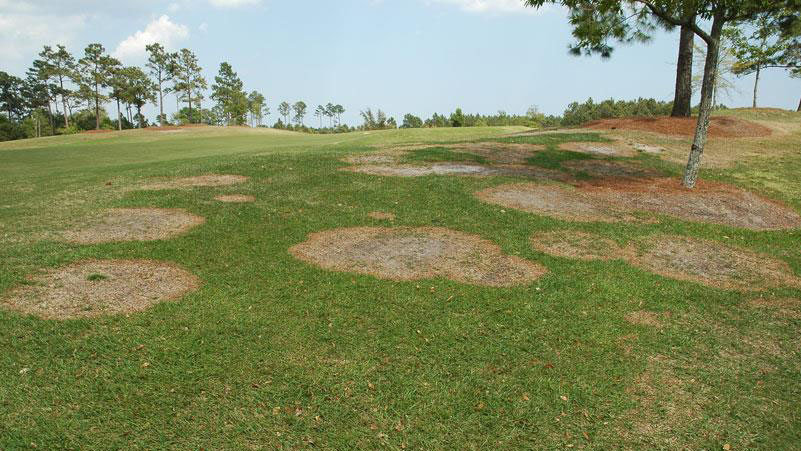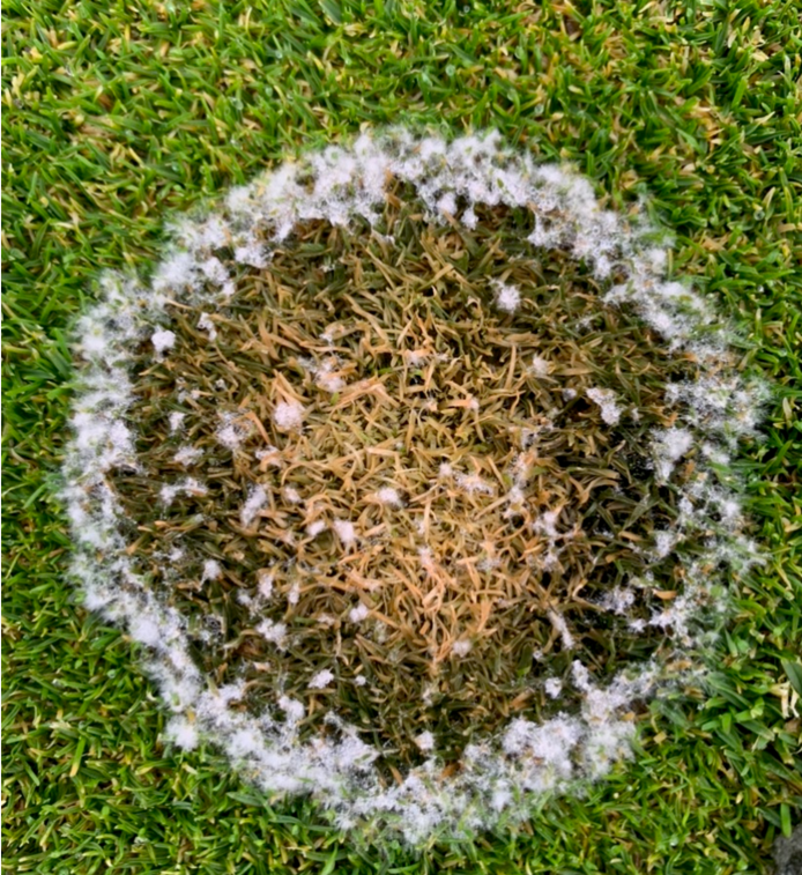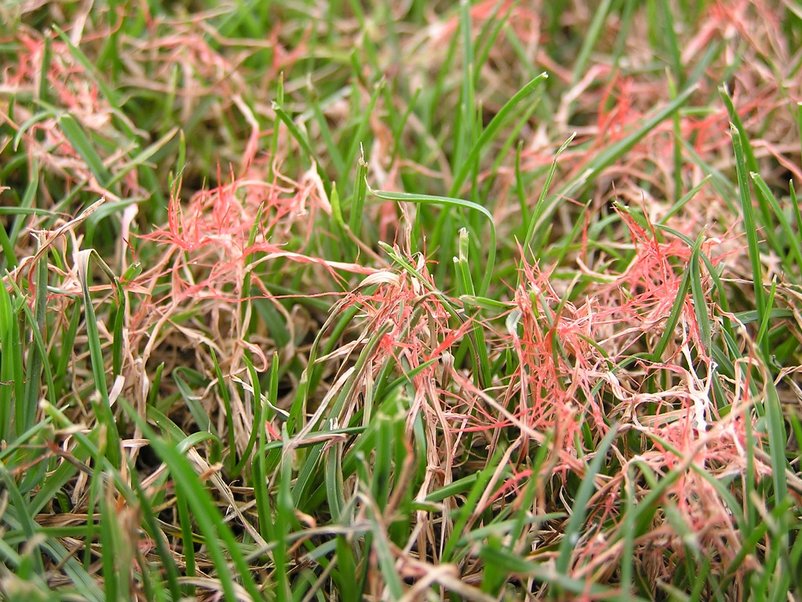Common Winter Diseases
Cold, moist weather is conducive for a myriad of diseases on warm- or cool-season grasses. This article will discuss some of the turfgrass diseases you might be seeing this winter.

Cold, moist weather is conducive for a myriad of diseases on warm- or cool-season grasses. This article will discuss some of the turfgrass diseases you might be seeing this winter.
Large patch is a winter disease commonly seen on St. Augustinegrass, zoysiagrass, centipedegrass, buffalograss, and seashore paspalum. Bermudagrass cultivars are less susceptible to this disease, as well as a few cultivars of these warm-season species listed. When temperatures creep below 70oF, as turf goes dormant for the winter or begins to transition into spring green, the large patch fungus in the soil and lower thatch layer of turf begins to flourish. Turfgrass blades begin to turn orange in color and exhibit red-to-black lesions towards the base of the plant, upon closer look. If left unmanaged, what might be a small patch of turf that turns color with the seasons, will increase in diameter each season it goes unmanaged.
Before large patch gets out of hand, here are some techniques to reduce the spread of this fungus:

*Picture: Large Patch Zoysia - This is large patch on zoysiagrass taken by North Carolina State University (NCSU)
Seen often in bermudagrass, leaf spot is a disease of the blade caused by light brown splotches along the blade with darker brown outer rings. Controlling this disease is best done early in the disease’s development. If left unmanaged, the pathogen could reach the crown of the turf and cause a larger problem in the warmer months called ‘melting out’. When temperature ranges between 60 and 65oF, moisture is prolonged, and air movement within the stand is minimal, and early signs of leaf spot can appear.
Leaf spot can be reduced by:

*Picture: Leaf Spot NCSU Turf Files – This is leaf spot on bermudagrass taken from the North Carolina State University Turf Files article on leaf spot.
Microdochium patch, also known as pink snow mold, is a disease that can occur after prolonged periods of wet and cold (30-60oF) spells. All cool-season species are susceptible to this disease: annual bluegrass, perennial ryegrass, fine fescues, Kentucky bluegrass, bentgrass, and tall fescue. Microdochium appears in circular patches of fluffy white mycelium on the outside with an orange-brown inner ring and dead, matted light brown turf on the inside about 6-8 inches in diameter.
Some ways to control Microdochium patch are:

*Picture: This is Microdochium patch on an annual bluegrass putting green taken by Brian McDonald (OSU) in 2011
Another disease that thrives in the cool (40-70oF) and wet weather that winter brings is red thread. This is a vibrant red fungus that can be seen intermingled with the leaves of slow-growing fine fescue, perennial ryegrass, Kentucky bluegrass, annual bluegrass, or creeping bentgrass. From a distance, red thread may look like small patches of rust-colored turf. Unlike most pathogens, this one will phase out as temperatures begin to rise in the spring, but the simplest methods for controlling red thread are to maintain adequate nitrogen fertility and improve water drainage.

*Picture: This is taken from a 2013 Pennsylvania State University article
All of these diseases are taken into consideration when breeding new turfgrass varieties. The National Turfgrass Evaluation Program (NTEP) trial sites record cultivar performance when under disease pressure. Information on a given cultivar can be found at www.ntep.org. For recommendations on when chemical and fertilizer applications should be made, consult your local university extension service publication outlining details.
Butler, L. and J. Kearns. (2017). Large Patch in Turf. NC State Extension Turf Files. URL: https://content.ces.ncsu.edu/large-patch-in-turf
Harmon, P. and Latin, R. (2009). Turfgrass Disease Profiles: Red Thread. Purdue University Extension Bulletin BP-104-W.
North Carolina State University Extension. Leaf Spot in Turf. NC State Extension Turf Files. URL: https://www.turffiles.ncsu.edu/diseases-in-turf/leaf-spot-in-turf/
Pscheidt, J. W. and C. M. Ocamb. (Senior Eds.) (2020). Lawn and Turf-Microdochium Patch (Pink Snow Mold). Pacific Northwest Plant Disease Management Handbook. Oregon State University.